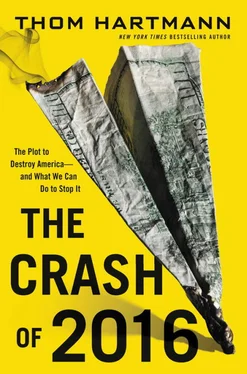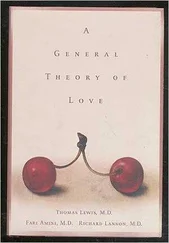For example, there was the Sherman Antitrust Act of 1890, which was intended to limit the size of corporations.
In response to the Robber Baron monopolies, Presidents Howard Taft and Woodrow Wilson went trust-busting.
Most notably, Taft would take a hacksaw to John D. Rockefeller’s Standard Oil Trust, cleaving it up into thirty-three separate companies. And the American people loved Taft for doing it.
But being too big wasn’t the only sin. Operating against the best interests of the public as a corporation could get you shut down, too. Our nation has a long history with the “corporate death penalty.” Beginning in the early 1800s, laws were passed in several states to make it easier for legislators to revoke corporate charters if businesses were operating against the public’s interest. And this routinely happened.
In Ohio, Mississippi, and Pennsylvania, banks were shut down for being “financially unsound.” In New York and Massachusetts, the corporations that ran the turnpikes were given a corporate death sentence for not keeping the roads in good repair.
By 1825, twenty states had amended their constitutions to make it easier for the state to “revoke, alter, or annul” corporate charters whenever a corporation “may be injurious to citizens of the community.”
And in just one year, 1832, the state of Pennsylvania sentenced ten corporations to death, revoking their charters for “operating contrary to the public interest.”
This continued into the late 1800s, when whiskey trusts, sugar corporations, and oil corporations were all put to death in several states across the nation. In New York, workers petitioned the state supreme court to slay the beast that is Standard Oil for labor abuses. In 1894, the court obliged and revoked Standard Oil’s corporate charter in that state.
And after the stock market crashed in 1929, FDR turned to the banks. He created the Securities and Exchange Commission (SEC) to regulate, for the first time, the purchasing and selling of shares on the stock market. He also created the Federal Deposit Insurance Corporation (FDIC), which insured people’s bank deposits. And with the Glass-Steagall Act, FDR built a wall between commercial and investment banking to make sure the banksters couldn’t use your checking account deposits to place risky bets on the stock market.
With these new reforms, Wall Street’s delirium was held in check. And for nearly sixty years, America went without a catastrophic economic crash. It was the longest such period of stability in the nation’s history.
But rules in the marketplace needed to be coupled with rules in the political arena. That meant taking Teddy Roosevelt’s advice: “We must drive the special interests out of politics. The citizens of the United States must effectively control the mighty commercial forces which they have themselves called into being. There can be no effective control of corporations while their political activity remains.” 57
In 1907 Teddy passed the Tillman Act (still on the books today), which banned corporate contributions in political elections. Violators of the law could face prison time, and corporations violating the law could be shut down.
The effect of all this government involvement in the workplace led to the greatest period of sustained growth in our national history, and gave rise to the golden age of the middle class through the middle of the twentieth century.
But just as the United States has had two great eras of a middle class, it has also had two dark eras of Economic Royalist rule, in which the middle class was mowed down by corporate behemoths. The first was the Gilded Age after the Great Crash of 1857 and Civil War, which put an end to the first era of the American middle class.
There’s an easy way to understand why a strong middle class with a lot of good-paying jobs and purchasing power is also good for economic stability.
Consider the game Monopoly. If your opponent scoops up Boardwalk, Park Place, North Carolina Avenue, Pacific Avenue, both utilities, the four railroads, and an array of other properties on the board—that’s it, the game’s over.
The other players, who were once middle-class property owners, will go bankrupt as they are forced to pay higher and higher costs for rent and services, utilities, and transportation. Eventually, one player has all the money, and the losers are left standing out in the cold.
But what if the Monopoly game didn’t end there?
What if the once-middle-class-but-now-broke players kept rolling the dice and kept going around the board, using their credit cards and lines of credit to stay in the game?
While they’re running up massive personal or small-business debt, the monopolist who owns everything is finding it harder and harder to collect income from the increasingly impoverished players. They can’t afford to pay rent, they can’t pay utilities, and they can’t ride on the railroads.
Eventually, when the consumers run out of both cash and credit and can no longer spend any money, even the monopolist goes broke. Then not only is the game over, but the game is over in a massive disaster.
This is remarkably similar to how real-world economics works when it’s deprived of a stable middle class.
The board game Monopoly was invented when America’s Gilded Age was in its final death throes. The game’s inventor, Lizzie Magie, named it “The Landlord’s Game.” But as she said, “It might well have been called the ‘Game of Life,’ as it contains all the elements of success and failure in the real world, and the object is… the accumulation of wealth.” 58
Lizzie was a Georgist (one who follows the teachings of economist Henry George), and believed that things found in nature, particularly land itself but also things like mineral wealth, are part of the commons and thus should really be owned by “we the people,” not private profiteers.
It was an ideology directly born out of the times—the Gilded Age—when Robber Barons used monopolies in steel, oil, rail, and finance to dominate the American economy. They built vast fortunes by owning all the stops on the Monopoly board of America, while working people’s conditions collapsed to the point where we went into the Great Depression.
Carnegie, Astor, Rockefeller, Morgan, and a few dozen other recognizable names built massive monopolies while ruthlessly destroying any upstart that dared try to compete. There was big money to be made in post–Civil War America, now crisscrossed by the railroads. The nation’s GDP nearly doubled, growing at the fastest rate ever. But that wealth didn’t trickle down; they’d mastered monopoly.
The rest of America was going bankrupt.
In the census of 1900, per capita income was less than $5,000 annually in today’s dollars. 59And more and more Americans who were once self-employed had their lives uprooted and were thrown under the juggernaut of the Robber Barons. In 1850, prior to this so-called Gilded Age, most Americans worked for themselves. But by 1900, the majority of Americans worked for someone else—in many cases the monopolists.
In his 1888 State of the Union Address in which President Grover Cleveland said the “citizen is… trampled to death beneath an iron heel,” he also called out the corruption of Congress by the Robber Barons.
“We discover that the fortunes realized by our manufacturers are no longer solely the reward of sturdy industry and enlightened foresight,” he said, “but that they result from the discriminating favor of the Government and are largely built upon undue exactions from the masses of our people.” 60
President Cleveland’s 1888 reality was our most prominent Founding Father’s worst fear. On December 20, 1787, Jefferson wrote to James Madison about his concerns regarding the first draft of our new proposed Constitution, namely that it didn’t include a Bill of Rights and, in particular, include a “restriction of monopolies.”
Читать дальше












